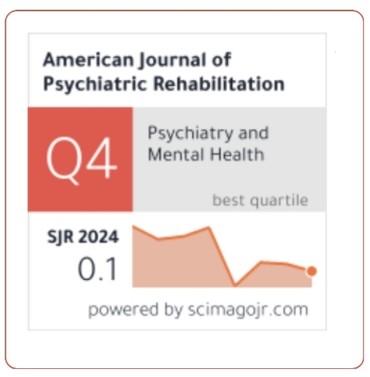The Role of Ultra-High-Resolution Magnetic Resonance Imaging (UHD-MRI) In the Early Detection of Neurodegenerative Diseases: Systematic Review
DOI:
https://doi.org/10.69980/ajpr.v28i5.530Keywords:
Ultra-high-resolution MRI; 7T MRI; Neurodegenerative diseases; Alzheimer’s disease; Parkinson’s disease; Early diagnosis; Structural imaging; Cortical laminae; Subcortical segmentation; Advanced neuroimaging.Abstract
Background: Early detection of neurodegenerative diseases such as Alzheimer’s disease (AD), Parkinson’s disease (PD), and multiple sclerosis (MS) remains a major clinical challenge. Conventional neuroimaging often fails to capture subtle anatomical changes at the preclinical stage. Ultra-high-resolution magnetic resonance imaging (UHD-MRI), especially at field strengths of 7 Tesla (7T) or higher, presents new opportunities for early diagnosis.
Objectives: This systematic review aimed to synthesize recent evidence on the diagnostic utility of UHD-MRI in identifying early structural and functional brain changes associated with neurodegenerative diseases.
Methods: Following PRISMA 2020 guidelines, we searched five databases and included peer-reviewed human studies published between 2010 and 2024. Studies were screened for use of UHD-MRI (≥7T) and relevant neurodegenerative outcomes. A narrative synthesis was conducted based on imaging resolution, anatomical targets, diagnostic performance, and integration with adjunct technologies.
Results: A total of 15 studies met inclusion criteria. UHD-MRI consistently demonstrated superior anatomical resolution, improving detection of hippocampal subfields, cortical laminae, and deep brain nuclei. Sensitivity improvements ranged from 15–30% over 3T MRI. Integration with AI and PET further enhanced diagnostic accuracy, while automated segmentation reduced operator variability.
Conclusion: UHD-MRI offers substantial improvements in detecting early pathological changes in neurodegenerative diseases. Its combination with AI-driven analysis and hybrid PET approaches holds promise for future diagnostic frameworks, though issues of accessibility, cost, and standardization remain.
References
1. Alzheimer's Disease Neuroimaging Initiative. (2017). High-resolution magnetic resonance imaging reveals nuclei of the human amygdala: Manual segmentation to automatic atlas. NeuroImage. https://www.sciencedirect.com/science/article/pii/S1053811917303427
2. Avram, A. V., Vu, A. T., Magdoom, K. N., & Beckett, A. (2024). Ultrahigh-resolution, whole-brain MAP-MRI in vivo using the NexGen 7T scanner. ResearchGate. https://www.researchgate.net/publication/391485913
3. Bourekas, E. C., & Christoforidis, G. A. (1999). High resolution MRI of the deep gray nuclei at 8 Tesla. Journal of Computer Assisted Tomography, 23(6), 867–871. https://journals.lww.com/jcat/fulltext/1999/11000/High_Resolution_MRI_of_the_Deep_Brain_Vascular.9.aspx
4. Cho, Z. H., Son, Y. D., Kim, H. K., et al. (2008). A fusion PET–MRI system with ultra-high field 7.0 T MRI for molecular-genetic imaging. Proteomics – Clinical Applications, 2(9), 1219–1224. https://doi.org/10.1002/pmic.200700744
5. Costagli, M., & Donatelli, G. (2021). Perspectives of ultra-high-field MRI in neuroradiology. Clinical Neuroradiology, 31(1), 3–15. https://doi.org/10.1007/s00062-015-0437-4
6. Doyon, V., Sarrhini, O., Loignon-Houle, F., & Auger, É. (2023). First PET investigation of the human brain at 2 µL resolution with the ultra-high-resolution (UHR) scanner. https://www.researchgate.net/publication/376513833
7. Düzel, E., Costagli, M., Donatelli, G., & Speck, O. (2021). Studying Alzheimer disease, Parkinson disease, and ALS with 7-T MRI. European Radiology Experimental, 5(1). https://doi.org/10.1186/s41747-021-00221-5
8. Fred, A. L., Kumar, A., Elias, T. S., & RF, F. R. (2024). Substantia Nigra segmentation in 7T MRI using a 3D UNet architecture for enhanced Parkinson’s disease diagnosis. IEEE Xplore. https://ieeexplore.ieee.org/abstract/document/10882252/
9. Gizewski, E. R., Mönninghoff, C., & Forsting, M. (2015). Perspectives of ultra-high-field MRI in neuroradiology. Clinical Neuroradiology, 25(3), 301–306. https://link.springer.com/article/10.1007/s00062-015-0437-4
10. Ineichen, B. V., Beck, E. S., & Piccirelli, M. (2021). New prospects for ultra-high-field magnetic resonance imaging in multiple sclerosis. Investigative Radiology, 56(11), 695–703. https://journals.lww.com/investigativeradiology/fulltext/2021/11000/new_prospects_for_ultra_high_field_magnetic.9.aspx
11. Kanel, P., Carli, G., Vangel, R., & Roytman, S. (2023). Challenges and innovations in brain PET analysis of neurodegenerative disorders: A mini-review. Frontiers in Neuroscience, 17, 1293847. https://www.frontiersin.org/articles/10.3389/fnins.2023.1293847/full
12. Lüsebrink, F., Wollrab, A., & Speck, O. (2013). Cortical thickness determination of the human brain using high-resolution 3 T and 7 T MRI data. NeuroImage, 70, 122–131. https://doi.org/10.1016/j.neuroimage.2012.12.059
13. McColgan, P., Joubert, J., & Tabrizi, S. J. (2020). The human motor cortex microcircuit: insights for neurodegenerative disease. Nature Reviews Neuroscience, 21(6), 335–346. https://www.nature.com/articles/s41583-020-0315-1
14. Parekh, M. B., Rutt, B. K., Purcell, R., et al. (2015). Ultra-high-resolution 7.0 T imaging of the hippocampus reveals the endfolial pathway. NeuroImage, 111, 478–485. https://doi.org/10.1016/j.neuroimage.2015.02.037
15. Pine, K., Zubkov, M., Bazin, P. L., Perlaki, G., & Edwards, L. (2024). Quantitative multi-parametric mapping of human subcortex at ultrahigh field. Max Planck Institute Repository. https://pure.mpg.de/pubman/faces/ViewItemOverviewPage.jsp?itemId=item_3624990
16. Snyder, P. J., Alber, J., Alt, C., & Bain, L. J. (2021). Retinal imaging in Alzheimer’s and neurodegenerative diseases. Alzheimer’s & Dementia, 17(5), 843–857. https://alz-journals.onlinelibrary.wiley.com/doi/pdfdirect/10.1002/alz.12179
17. Svetozarskiy, S. N., & Kopishinskaya, S. V. (2015). Retinal optical coherence tomography in neurodegenerative diseases. CyberLeninka. https://cyberleninka.ru/article/n/retinal-optical-coherence-tomography-in-neurodegenerative-diseases-review.pdf
18. van Veluw, S. J., Charidimou, A., van der Kouwe, A. J., et al. (2016). Microbleed and microinfarct detection in amyloid angiopathy: a high-resolution MRI-histopathology study. Brain, 139(12), 3151–3162. https://doi.org/10.1093/brain/aww229
19. Zeng, X., Puonti, O., Sayeed, A., Herisse, R., & Mora, J. (2024). Segmentation of supragranular and infragranular layers in ultra-high-resolution 7T ex vivo MRI of the human cerebral cortex. Cerebral Cortex, 34(9), bhae362. https://academic.oup.com/cercor/article-abstract/34/9/bhae362/7755370
20. Zeng, X., Wang, Z., Tan, W., Petersen, E., & Cao, X. (2023). A conformal TOF–DOI Prism–PET prototype scanner for high-resolution quantitative neuroimaging. Medical Physics, 50(10), 5982–5993. https://aapm.onlinelibrary.wiley.com/doi/abs/10.1002/mp.16223
Downloads
Published
Issue
Section
License
Copyright (c) 2025 American Journal of Psychiatric Rehabilitation

This work is licensed under a Creative Commons Attribution 4.0 International License.
This is an Open Access article distributed under the terms of the Creative Commons Attribution 4.0 International License permitting all use, distribution, and reproduction in any medium, provided the work is properly cited.









